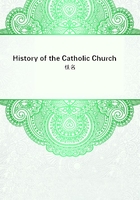
第289章
The Pope appointed Donat O'Teige Archbishop of Armagh in 1560, and on his death Richard Creagh was designated as his successor. The latter was a native of Limerick, who had graduated at Louvain, and at the time he was nominated by David Wolf for an Irish archbishopric he kept a school in his native diocese. Having been consecrated in Rome in 1564 he arrived in Ireland towards the end of that year only to be arrested and thrown into prison, from which he managed to make his escape at Easter (1565). He returned to his diocese, but he soon found himself in conflict with Shane O'Neill. The archbishop was an Anglo-Irishman, who stood for loyalty to the queen, and who regarded O'Neill and his followers as both rebels, and, in a sense, savages. Instead of encouraging O'Neill's men to maintain their struggle he preached on the duty of obedience, whereat O'Neill was so enraged that he was at first inclined to drive the Primate from Armagh. He burned the cathedral of Armagh not, however, as is sometimes represented, in hatred of the archbishop, but because it had been used as a fortress by the English. The relations between the spiritual and temporal ruler of Ulster improved, and Creagh addressed a petition to the Deputy to be allowed to continue the Catholic services in the churches (1566).
He was captured once again early in 1567, and put upon his trial. The jury having refused to find a verdict against him, both they and the accused were committed to prison in Dublin Castle. The archbishop eluded his guards once again, and it was only after the Earl of Kildare had promised that his life should be spared that his whereabouts were discovered. In December 1567 he was lodged in the Tower of London, in which he was kept a close prisoner, though he still contrived to communicate with Rome and with his diocese. Despite the intercession of the Spanish ambassador, and notwithstanding the fact that he suffered from grievous bodily infirmities, he remained a prisoner till his death in October 1585. As a guarantee had been given by the Earl of Kildare that his life would be spared, it was not deemed prudent to execute him, but according to well authenticated evidence his death was brought about by poison.[76]
Thomas O'Herlihy was appointed Bishop of Ross on the recommendation of Father Wolf in 1561, and after having been consecrated he attended the Council of Trent. On his return to Ireland he took an active part in encouraging James Fitzmaurice, and was deputed to accompany the Archbishop of Cashel to seek for aid from Philip II. of Spain. He was captured in 1571 and sent to the Tower of London, where he was kept prisoner for about three years and a half. He came back once again to his diocese, and laboured strenuously, not merely in Ross, but in various districts in the South till his death in 1579 or 1580.[77]
Maurice Fitzgibbon, Archbishop of Cashel, went to Spain as the representative of the Southern Geraldines and their allies. Having failed to get any help from Philip II., he endeavoured at various times to interest the King of France, the Duke of Anjou, and the Duke of Alva in Irish affairs. Though he was certainly in Scotland, where he was arrested in 1572, it is doubtful if he ever returned to his diocese. According to one authority he was captured in Munster and kept a prisoner in Cork till his death in 1578, but it is more probable that he died at Oporto.[78]
After the suppression of the Geraldine uprising and after the decree of excommunication had been issued against Elizabeth still more violent measures were taken against the bishops and clergy. The Franciscan, Bishop O'Hely, was taken, together with another member of his order, at Kilmallock, and both were put to death (1578 or 1579).
Edmund Tanner, who had been appointed to Cork in 1574, and entrusted with special faculties for the provinces of Dublin and Cashel, was arrested shortly after his arrival in Ireland and was thrown into prison. He succeeded, however, in escaping, and he continued his labours in various parts of Munster and Leinster till his death in 1578 or 1579. Nicholas Skerrett, a graduate of the /Collegium Germanicum/ in Rome, was appointed to Tuam in October 1580. He was thrown into prison after his arrival in Ireland, and, having succeeded in escaping from his captors, he made his way into Spain. He died at Lisbon in 1583 or 1584. Maurice MacBrien was appointed to Emly in 1567on the recommendation of Father Wolf. During the earlier stages of the Desmond rebellion he took active steps to promote the Catholic confederation. At this period it is not improbable that he went to Spain to solicit the co-operation of Philip II., but he returned to Ireland, was captured in 1584, and two years later he died in prison in Dublin. Peter Power or de la Poer was provided to Ferns by the Pope in 1582. He was arrested and while in prison was induced to make his submission, but on his release, stricken with sorrow for the weakness he had shown, he boldly confessed his error and was arrested once more. How long he was detained is not certain, but it is clear from a letter of the Bishop of Killaloe that he was treated with the utmost severity. He died in Spain in 1587.[79]
In 1581 Dermot O'Hurley was appointed to the Archbishopric of Cashel.